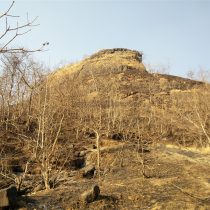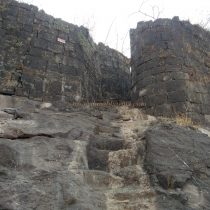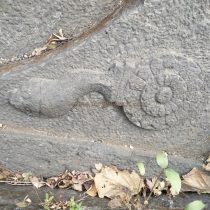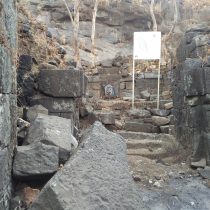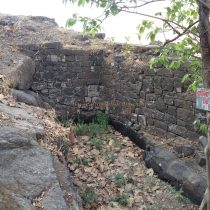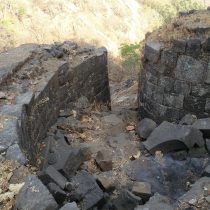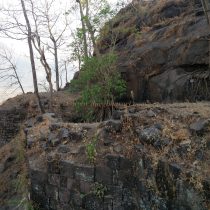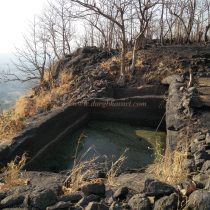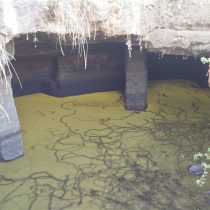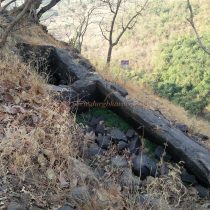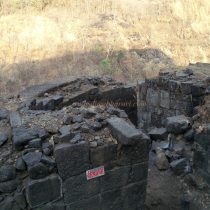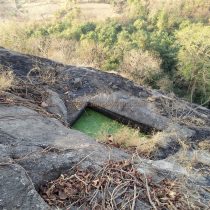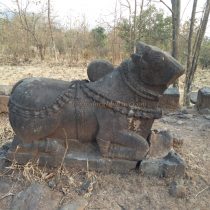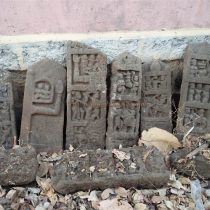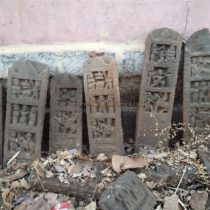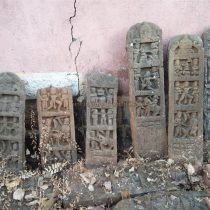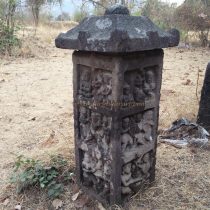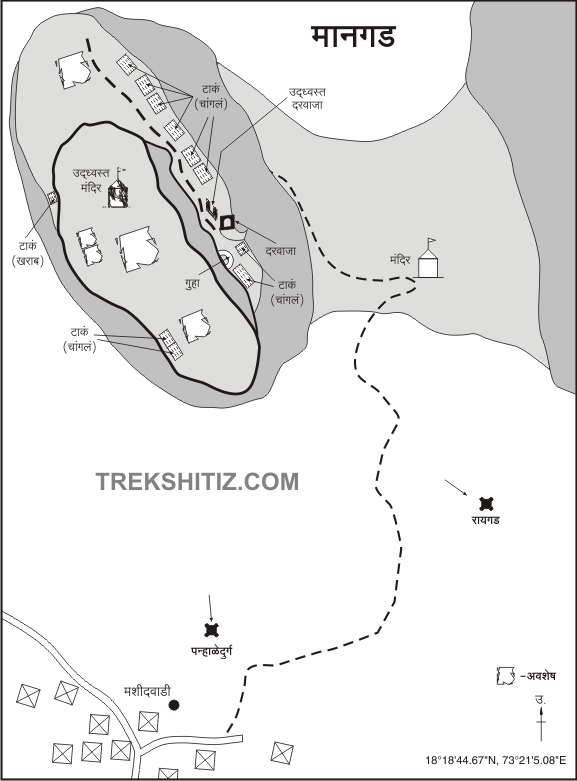MANGAD
TYPE : HILL FORT
DISTRICT : RAIGAD
HEIGHT : 770 FEET
GRADE : MEDIUM
Raigad Fort, the capital of the Swarajya, has many sub-forts like Mangad, Daulatgad, Panhalghar, Songad, Chambhargad, and Lingana. The chain of these forts made it difficult for the enemy to easily attack the capital. Mangad fort is considered to be the outpost of the capital Raigad. Considering the excavated cisterns in the rock on the fort, this fort must have existed before Raigad fort. Today, this small fort still stands in the vast mountains of the Sahyadri. Due to this fort, this taluka got its name Mangaon. To visit Mangad, one has to reach Nizampur village on the Mangaon road. The road goes from Nizampur village to Pachad village at the foothills of Raigad. If you continue on that road, you will come across Borwadi and Mashidwadi.
...
Durgveer, a Mumbai-based organization, has erected roadside signs on Nizampur to Mashidwadi road. Mangad fort is situated on a small hill behind Mashidwadi village. There is a wide footpath from Mashidwadi to Mangad from the village and it takes about fifteen to twenty minutes to reach the gorge. On the plateau of the fort is the temple of Goddess Vinzai with a tiled roof. This temple is a very suitable place to stay at the fort. Built-in thick bushes, the temple has an armed idol of Goddess Vinjai and two stone carvings, and a small Deepmal near the temple. In front of the temple, there are a few small hero stones. If you look at the fort from the Vizai temple, you can see the gate of the fort hidden behind two strong bastions. Behind the temple are fifty-one steps carved into the rock to reach the fort. After climbing these steps, the main entrance of Mangad's north-facing gate is reached. Both the bastions of the gate are in good condition but the arch has collapsed. Upon entering through the entrance, there is a second ruined entrance at right angles to the first entrance on the left. Its arch is completely sloping and a snake/lotus sculpture is carved on a piece of the fallen arch. An idol of Hanuman is situated in a corner in front. From the main gate of Mangad, the road is divided into two, left and right. Going to the left from the main entrance, there is a spacious cave to live in front of. This cave must have been used as a storage room. There are two water cisterns outside the cave and one of them is in the front. This cistern in the front is carved in the bastion itself. Going straight from there, there is a sign showing the way to the top of the fort. From there, you can reach the top of the fort in two to three minutes by following some excavated steps. On reaching the citadel, there is a quadrangle structure of a mansion in front. The footpath leading to the right from the main gate also leads to the top of the fort, but if you go down that side, you can see the fort from all sides. There is a flagpole on the top of the fort and there are two water cisterns near it. From the top of Mangad, there is a beautiful view of the Sahyadri range and the foothills of Mashidwadi village. As we proceeded along the slope, we see the stones of the remains on both sides of the road. On the left side of the road, you can see water cisterns in the valley below. After seeing it, an open ground could be seen is in front. The remains of a ruined temple can be seen next to it. There are some broken house remnants nearby. The main attraction of Mangad is the recently discovered secret door which is visible if you go straight ahead. The locals say that steps are leading to the secret door and the way down from there leads to Chach village but there is no way down from here. The head of Mangad is small and you can see it in half an hour. If we start climbing the fort and start descending from the opposite side, we reach the main gate again. Going down the hill a little further, on the right side there are 6 water cisterns carved in the rock on the ground. Here, our journey was completed and we should descend our way back. There is a temple of Kalbhairav just outside the village on the way out of Masjidwadi. Adjacent to this temple, one can see the quadrangle structure of an ancient ruined Shiv temple. There is a huge Nandi on this quadrangle structure which is about three feet high. The stone carvings scattered around and the structure of Nandi, show that this temple is ancient. A look at the ancient history of the fort reveals its position as the guardian of the Shevalya Ghat. During Shivaji Maharaj’s period, the Maratha family of Dhule was sarnaubat, Govindji More was Havaldar and Prabhu was administrative staff for Mangad. Mumbai's 'Durgveer' organization has undertaken the work of conservation of the fort and has given a new look to the fort without affecting its original splendor. The organization has erected signboards on the entire fort showing the remains. The work done by the members of this organization for the conservation of the fort is commendable.
© Suresh Nimbalkar

